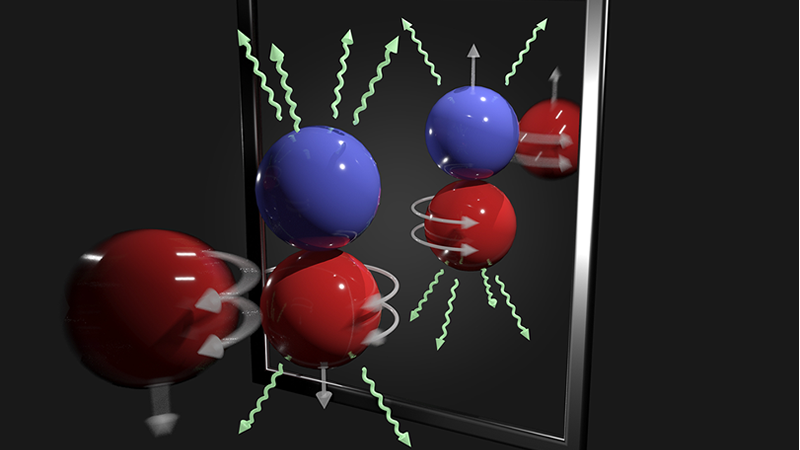December 19, 2018

A team of scientists has for the first time measured the elusive weak interaction between protons and neutrons in the nucleus of an atom. They had chosen the simplest nucleus consisting of one neutron and one proton for the study.
Through a unique neutron experiment at the Department of Energy’s Oak Ridge National Laboratory, experimental physicists resolved the weak force between the particles at the atom’s core, predicted in the Standard Model that describes the elementary particles and their interactions.
Their result is sensitive to subtle aspects of the strong force between nuclear particles, which is still poorly understood.
The team’s observation, described in Physical Review Letters, culminates decades of work performed with an apparatus known as NPDGamma. The first phase of the experiment took place at Los Alamos National Laboratory. Building on the knowledge gained at LANL, the team moved the project to ORNL to take advantage of the high neutron beam intensity produced at the lab’s Spallation Neutron Source.
Protons and neutrons are made of smaller particles called quarks that are bound together by the strong interaction, which is one of the four known forces of nature: strong force, electromagnetism, weak force and gravity. The weak force exists in the tiny distance within and between protons and neutrons; the strong interaction confines quarks in neutrons and protons.
The weak force also connects the axial spin and direction of motion of the nuclear particles, revealing subtle aspects of how quarks move inside protons and neutrons.
“The goal of the experiment was to isolate and measure one component of this weak interaction, which manifested as gamma rays that could be counted and verified with high statistical accuracy,” said David Bowman, co-author and team leader for neutron physics at ORNL. “You have to detect a lot of gammas to see this tiny effect.”
Read more at ornl.gov/news.
Related Publication: Blyth, D., et.al. (2018). First Observation of P-oddγ Asymmetry in Polarized Neutron Capture on Hydrogen. Physical Review Letters 121, 242002. doi.org/10.1103/PhysRevLett.121.242002